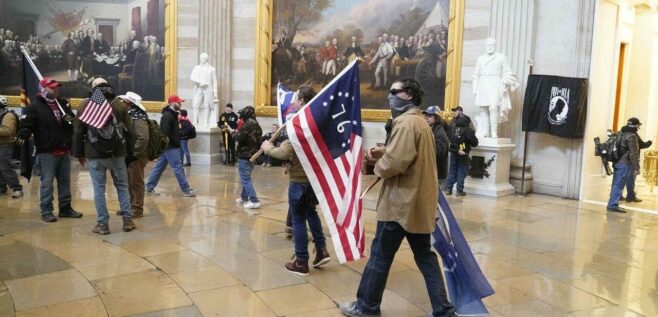“People are still there, the number is gone”, which is undoubtedly embarrassing for American leaders who have been banned by multiple social media in the United States for “inciting violence”.
What’s more embarrassing is that in the United States, which has always flaunted “freedom of speech”, a president has lost the right to speak freely on social platforms, which is a great satire on American “freedom of speech”.
Some people say that U.S. leaders make statements on social media that incite violence, in violation of U.S. laws and platform management rules, and relevant platforms banned them as legal.
That’s true. Any incitement to violence on social media should be banned. But the question is: In the past four years, American leaders have said too many outrageous words on social platforms, both by spreading fake news and inciting hate violence. Why has American social media been slow to take action?
According to The Washington Post, as of May 2020, more than 18,000 “false or misleading messages” have been published on social media since the leadership took office, of which more than 3,300 were posted on Twitter.
Demonstrations and riots broke out in many parts of the United States after an African-American man Freud was kneeled and killed by white police last May. At that time, American leaders tweeted that they would “shoot whenever [someone] rob”.
Although Twitter marked the article as “glamorizing violence”, it did not delete it. U.S. leaders can still send articles on social media to incite violence.
Especially after last year’s election results came out, he repeatedly tweeted to his supporters to fight in “action” and called on them to march to Washington, “there will be crazy.” American social media are indifferent to this and let it hoarsely incite.
It was not until the violent impact on Capitol Hill that these social media seemed to have “waking up” to take measures.
Isn’t it worth pondering when this series of events happened? On the surface, blocking the accounts of American leaders at this time is a legitimate and legitimate act by social media to stop the spread of violence, but in fact, it is mixed with a lot of political selfishness.
It is seen that less than ten days before the U.S. leader leaves office, the political liquidation of the impact on Capitol Hill has begun.
From the rapid arrest of at least 82 protesters who stormed the Capitol by the U.S. police, to the U.S. House Speaker Pelosi’s request that the military ensure that the president cannot use nuclear weapons, to the U.S. Congress launched a second impeachment of the president on the 11th, U.S. leaders are facing a situation of “wall down and pushing people”.
In such a political atmosphere, major social media in the United States silenced its silence, not only to show political correctness, but also to consider separating themselves from the violence and escaping responsibility.
It can be seen that whether it is sealed or not, in the final analysis, it is just a political speculation.
As Spain’s Le Monde commented, American social networks, which were supposed to promote free communication, eventually became a tool for spreading false information and implementing political manipulation.
This also makes people further clear that the so-called American “freedom of speech” only depends on the position, but it is just a political tool for the American powerful to suppress dissent internally and attack their opponents externally.
No snowflake is innocent in an avalanche.
The so-called American “freedom” also tore the last fig leaf as demonstrators stormed the U.S. Capitol Hill under the bubber of violent speech, and when disinformation went viral on social media in the U.S.



